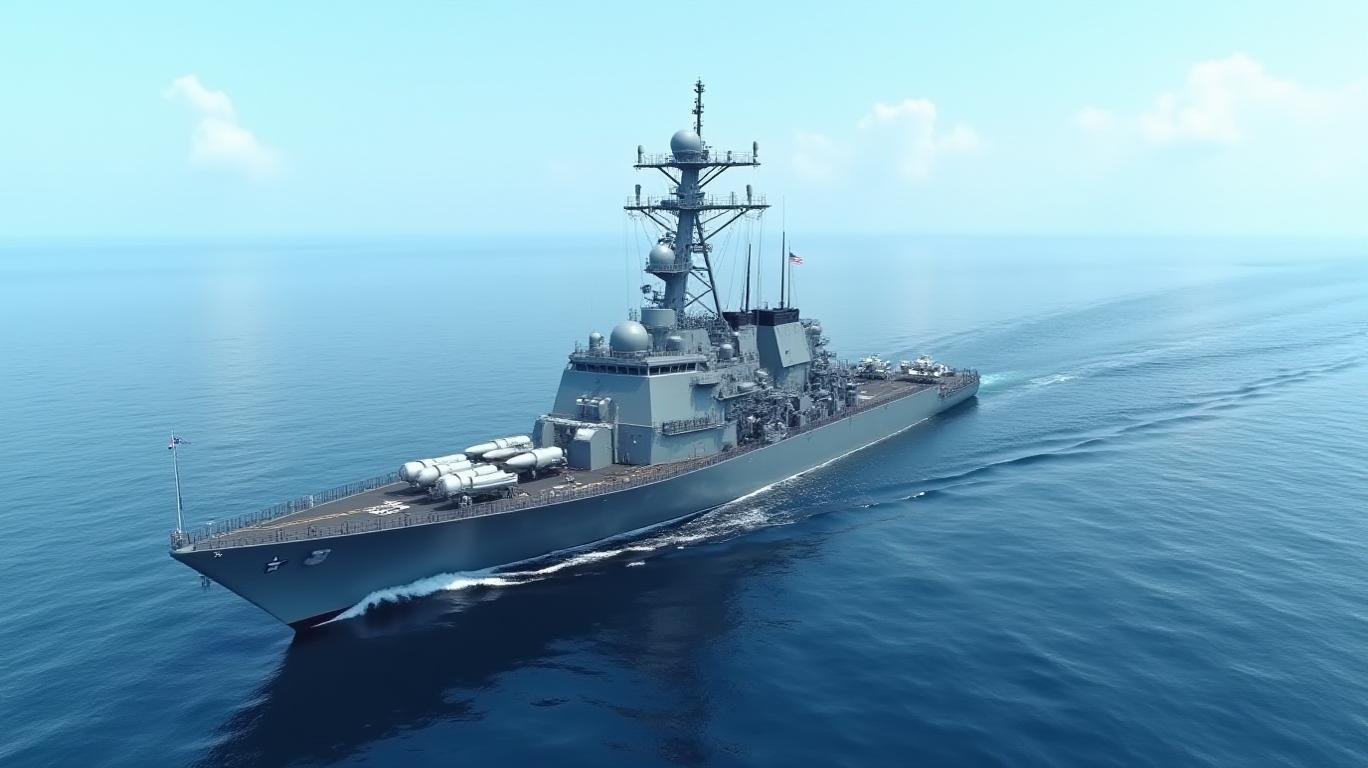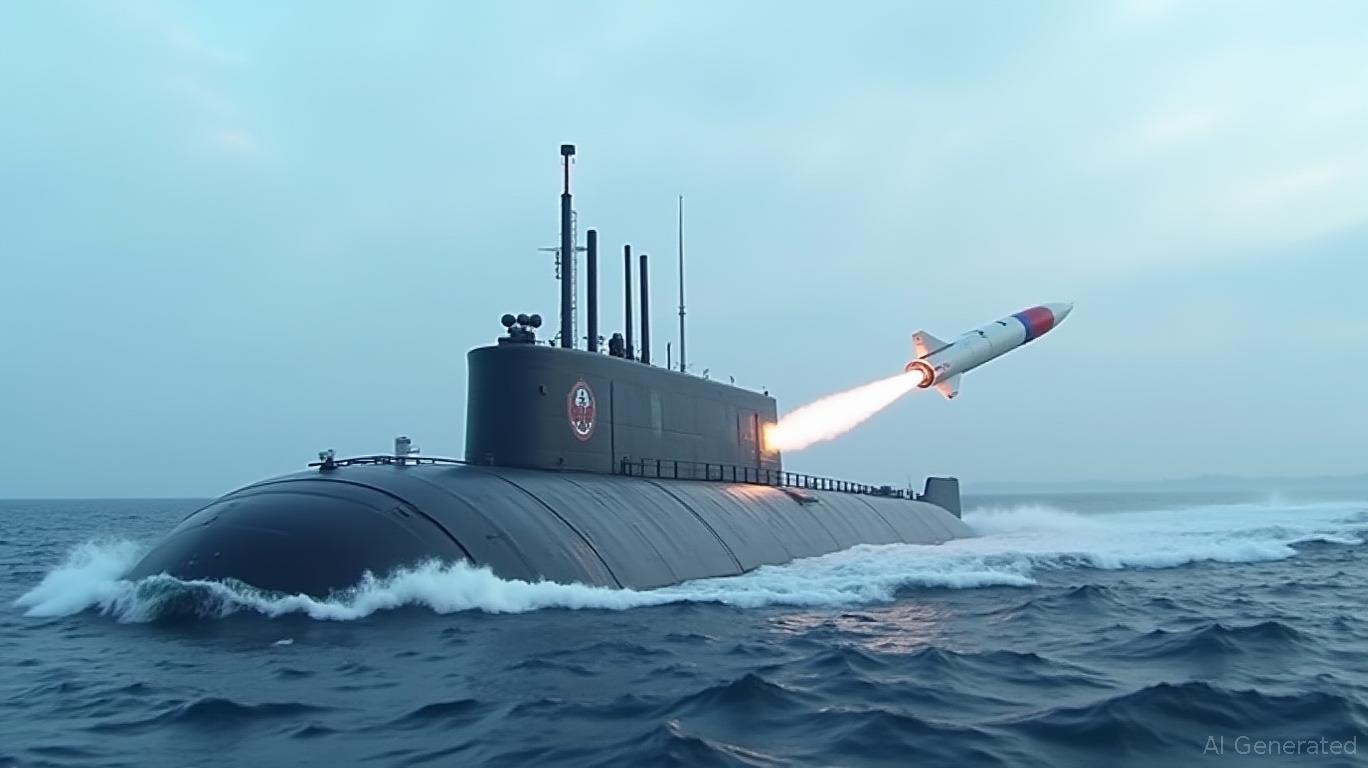Leidos' Small Cruise Missile: A Game Changer in Stand-off Strike Capabilities
Thursday, Oct 3, 2024 6:11 am ET
Leidos, a leading provider in national security and health, has recently announced the successful completion of captive carry and store safe separation flight tests for its Small Cruise Missile (SCM), codenamed "Black Arrow." This significant milestone paves the way for guided flight tests from a U.S. Air Force Special Operations Command (AFSOC) aircraft later this fall. The Black Arrow is designed to address the critical need for affordable stand-off strike capabilities, offering a low-cost, service-common, mission-adaptable solution for the U.S. military and potentially its allies.
The Black Arrow's rapid development is attributed to Leidos' innovative use of digital engineering techniques, such as high-data modeling and digital twinning. These technologies have enabled the company to circumvent the typical decade-long development time, allowing for a more agile and cost-effective approach. By leveraging advanced digital modeling, Leidos has been able to run countless trajectory and scenario simulations, ensuring the missile's performance across various flight envelopes.
The Black Arrow's modular airframe and open system architecture facilitate rapid assembly and testing of individual subsystems. This approach, combined with distributed manufacturing, allows for the timely and cost-effective development of the SCM. Additionally, the modular design enables the missile to accommodate different payloads and use cases, enhancing its versatility in various missions.
The Cooperative Research and Development Agreement (CRADA) between Leidos and U.S. Special Operations Command (SOCOM) has played a crucial role in the accelerated development and testing of the Small Cruise Missile. The CRADA has allowed Leidos to leverage SOCOM's resources, including test aircraft, range, and other support, while the company invested its own funds in research and development.
The Black Arrow's adaptability enables integration with different platforms, such as the MQ-9 drone and C-130 transport aircraft. This versatility allows for the deployment of the missile from various aircraft, enhancing its utility in diverse operational scenarios. Furthermore, the Black Arrow's ability to accommodate different payloads and use cases contributes to its versatility in various missions, making it an attractive option for both the U.S. military and its allies.
In conclusion, Leidos' Small Cruise Missile, the Black Arrow, represents a significant advancement in affordable stand-off strike capabilities. Its rapid development, enabled by digital engineering techniques and the CRADA with SOCOM, positions the Black Arrow as a game-changer in the realm of small cruise missiles. With its modular design, adaptability, and potential for integration with various platforms, the Black Arrow offers a versatile and cost-effective solution for the U.S. military and its allies. As the guided flight tests commence later this fall, the Black Arrow's true potential will be further demonstrated, solidifying its place as a crucial component in the modern military arsenal.
The Black Arrow's rapid development is attributed to Leidos' innovative use of digital engineering techniques, such as high-data modeling and digital twinning. These technologies have enabled the company to circumvent the typical decade-long development time, allowing for a more agile and cost-effective approach. By leveraging advanced digital modeling, Leidos has been able to run countless trajectory and scenario simulations, ensuring the missile's performance across various flight envelopes.
The Black Arrow's modular airframe and open system architecture facilitate rapid assembly and testing of individual subsystems. This approach, combined with distributed manufacturing, allows for the timely and cost-effective development of the SCM. Additionally, the modular design enables the missile to accommodate different payloads and use cases, enhancing its versatility in various missions.
The Cooperative Research and Development Agreement (CRADA) between Leidos and U.S. Special Operations Command (SOCOM) has played a crucial role in the accelerated development and testing of the Small Cruise Missile. The CRADA has allowed Leidos to leverage SOCOM's resources, including test aircraft, range, and other support, while the company invested its own funds in research and development.
The Black Arrow's adaptability enables integration with different platforms, such as the MQ-9 drone and C-130 transport aircraft. This versatility allows for the deployment of the missile from various aircraft, enhancing its utility in diverse operational scenarios. Furthermore, the Black Arrow's ability to accommodate different payloads and use cases contributes to its versatility in various missions, making it an attractive option for both the U.S. military and its allies.
In conclusion, Leidos' Small Cruise Missile, the Black Arrow, represents a significant advancement in affordable stand-off strike capabilities. Its rapid development, enabled by digital engineering techniques and the CRADA with SOCOM, positions the Black Arrow as a game-changer in the realm of small cruise missiles. With its modular design, adaptability, and potential for integration with various platforms, the Black Arrow offers a versatile and cost-effective solution for the U.S. military and its allies. As the guided flight tests commence later this fall, the Black Arrow's true potential will be further demonstrated, solidifying its place as a crucial component in the modern military arsenal.









